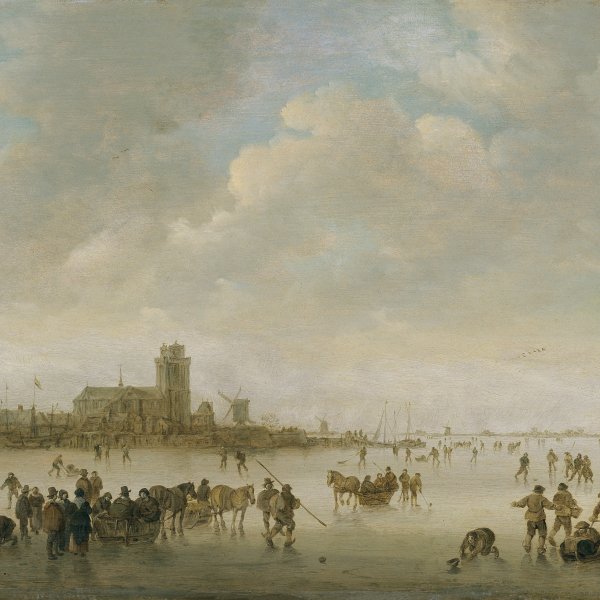Landscape with the Rest on the Flight into Egypt
ca. 1640 - 1645
Oil on panel.
34.3 x 51.8 cm
Museo Nacional Thyssen-Bornemisza, Madrid
Inv. no.
222
(1928.1
)
ROOM 26
Level 2
Permanent Collection
Lievens trained in his native city with Joris van Schooten and later in Amsterdam with Pieter Lastman. Between 1625 and 1631 he maintained close links with the young Rembrandt, possibly sharing a studio in Leiden where they worked together. As a result, their output of this date is extremely similar. Around 1635 Lievens is documented in Antwerp where he remained until 1644, after which he moved to Amsterdam where he lived until 1653. In Antwerp he became familiar with the work of Van Dyck, whose influence is evident in his portraits, as well as that of Rubens and Adriaen Brouwer. The influence of the latter is evident in his landscapes, the genre on which he focused at this time. The use of colour by
these artists was also important for Lievens, as a result of which he lightened and softened his palette.
The present panel has been dated to the years between the end of his time in Antwerp and his move to Amsterdam and critics have noted that it is notably influenced by Rembrandt and Adriaen Brouwer. In the past this panel has been attributed to both those names. It was auctioned as a work by Brouwer in London in 1921, an attribution retained six years later when it was exhibited in Berlin. Shortly afterwards Wescher attributed it to the circle of Rembrandt while Bode attributed it to Lievens, as did Schneider.
Lievens offers a peaceful depiction of this biblical episode. Mary is seated on the ground holding the Christ Child in her arms while a patient Saint Joseph stands beside them leaning on the donkey’s flank. The composition is organised through the diagonal line of the river that starts in the foreground and leads the eye into the background until it reaches a city in the centre of the composition. The perspective is also reinforced by two rocky outcrops that impede the course of the river, over which is a rustic bridge that emphasises the pictorial depth. Lievens uses a horizontal format appropriate to landscapes and constructs the scene through the use of ochre tones in the rocks, ground and vegetation. Only the sky and the bright crimson of Mary’s dress stand out against the uniform tonality of this scene.
From the point of view of its date this panel has been compared to the background in the artist’s Self-portrait in the National Gallery, London, and with the panel of Tobias and the Angel in that gallery. Two further landscapes, one in the Gemäldegalerie, Berlin, and another in an unknown location have also served as reference points for a dating. Schneider emphasised the parallels between this background and various prints of landscapes.
Mar Borobia
The present panel has been dated to the years between the end of his time in Antwerp and his move to Amsterdam and critics have noted that it is notably influenced by Rembrandt and Adriaen Brouwer. In the past this panel has been attributed to both those names. It was auctioned as a work by Brouwer in London in 1921, an attribution retained six years later when it was exhibited in Berlin. Shortly afterwards Wescher attributed it to the circle of Rembrandt while Bode attributed it to Lievens, as did Schneider.
Lievens offers a peaceful depiction of this biblical episode. Mary is seated on the ground holding the Christ Child in her arms while a patient Saint Joseph stands beside them leaning on the donkey’s flank. The composition is organised through the diagonal line of the river that starts in the foreground and leads the eye into the background until it reaches a city in the centre of the composition. The perspective is also reinforced by two rocky outcrops that impede the course of the river, over which is a rustic bridge that emphasises the pictorial depth. Lievens uses a horizontal format appropriate to landscapes and constructs the scene through the use of ochre tones in the rocks, ground and vegetation. Only the sky and the bright crimson of Mary’s dress stand out against the uniform tonality of this scene.
From the point of view of its date this panel has been compared to the background in the artist’s Self-portrait in the National Gallery, London, and with the panel of Tobias and the Angel in that gallery. Two further landscapes, one in the Gemäldegalerie, Berlin, and another in an unknown location have also served as reference points for a dating. Schneider emphasised the parallels between this background and various prints of landscapes.
Mar Borobia









